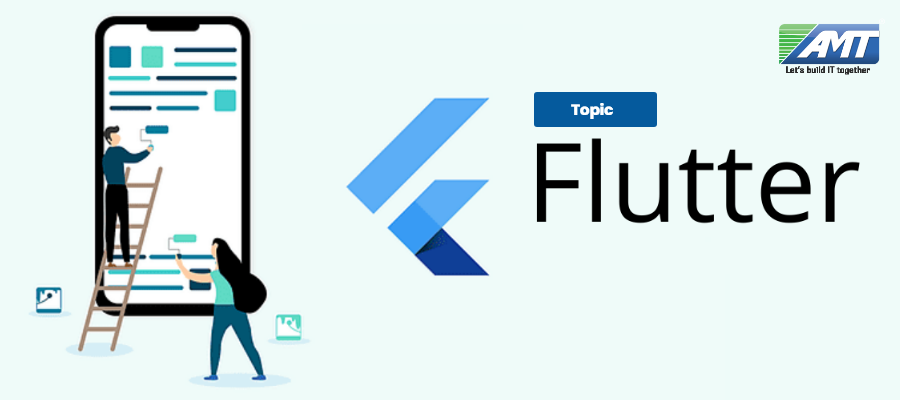Flutter is an open-source mobile application development SDK created by Google. It is used to develop applications for Android and iOS, as well as being the primary method of creating applications for Google Fuchsia.
The first version of Flutter was known as “Sky” and ran on the Android operating system. It was unveiled at the 2015 Dart developer summit, with the stated intent of being able to render consistently at 120 frames per second. During the keynote of Google Developer Days in Shanghai, Google announced Flutter Release Preview 2 which is the last big release before Flutter 1.0. On December 4th, 2018, Flutter 1.0 was released at the Flutter Live event, denoting the first “stable” version of the Framework.
The major components of Flutter include:
- Dart platform
- Flutter engine
- Foundation library
- Design-specific widgets
Dart platform:
Flutter apps are written in the Dart language and make use of many of the language’s more advanced features.
On Android, and on Windows, macOS and Linux via the semi-official Flutter Desktop Embedding project, Flutter runs in the Dart virtual machine which features a just-in-time execution engine. Due to App Store restrictions on dynamic code execution, Flutter apps use ahead-of-time (AOT) compilation on iOS.
A notable feature of the Dart platform is its support for “hot reload” where modifications to source files can be injected into a running application. Flutter extends this with support for stateful hot reload, where in most cases changes to source code can be reflected immediately in the running app without requiring a restart or any loss of state. This feature as implemented in Flutter has received widespread praise.
Flutter engine:
Flutter’s engine, written primarily in C++, provides low-level rendering support using Google’s Skia graphics library. Additionally, it interfaces with platform-specific SDKs such as those provided by Android and iOS.
Foundation library:
The Foundation library, written in Dart, provides basic classes and functions which are used to construct applications using Flutter, such as APIs to communicate with the engine.
Widgets:
UI design in Flutter typically involves assembling and/or creating various widgets. A widget in Flutter represents an immutable description of part of the user interface; all graphics, including text, shapes, and animations are created using widgets. More complex widgets can be created by combining many simpler ones.
However, the use of widgets is not strictly required to build Flutter apps. An alternative option is to use the Foundation library’s methods directly, interfacing with “canvas” commands to draw shapes, text, and imagery directly to the screen. This property of Flutter has been utilized in a few frameworks, such as the open-source Flame game engine.
Design-specific widgets:
The Flutter framework contains two sets of widgets which conform to specific design languages. Material Design widgets implement Google’s design language of the same name, and Cupertino widgets imitate Apple’s iOS design.
The above is a basic about Flutter. Watch this space for more updates on the latest trends in Technology
